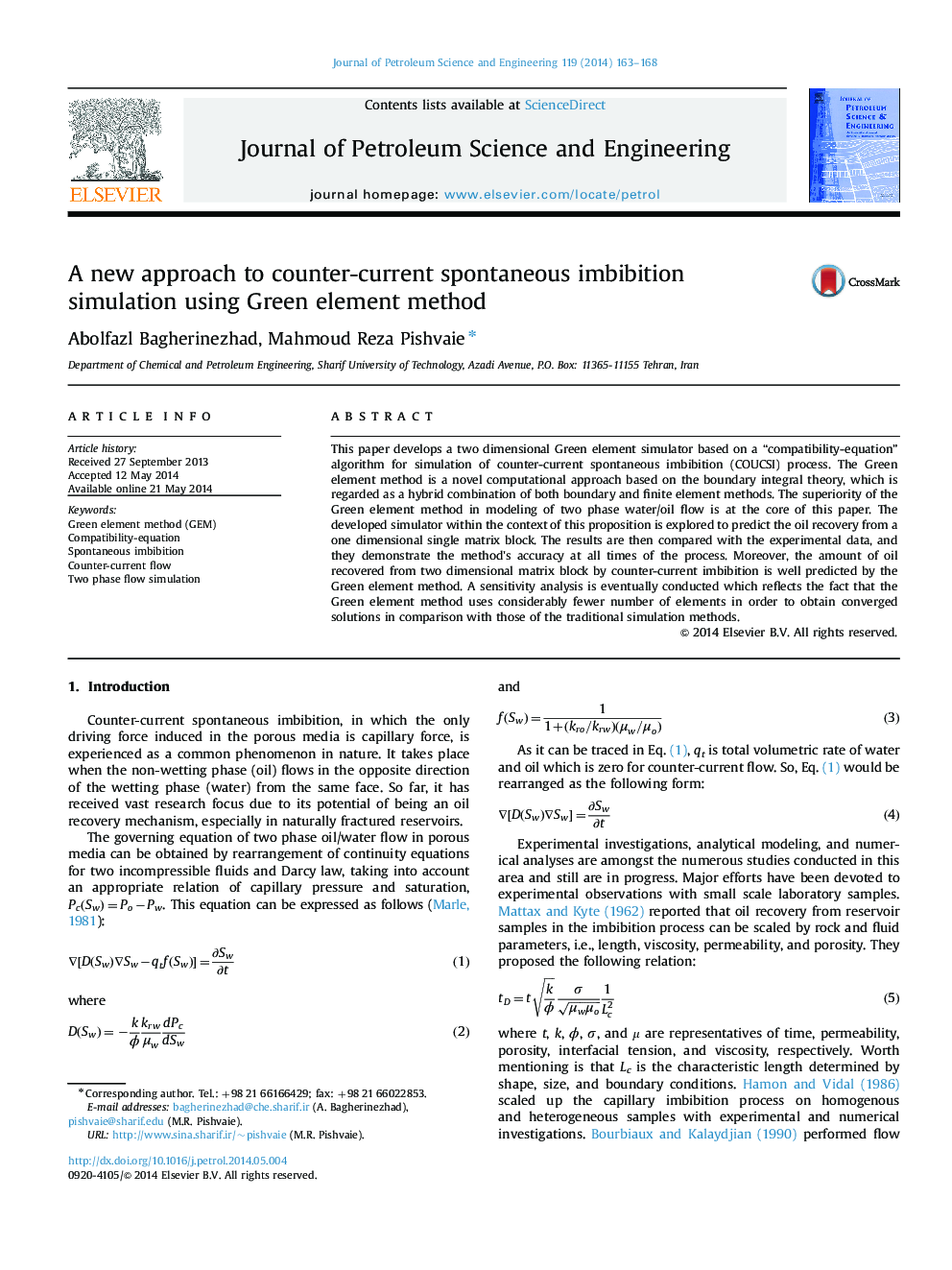| کد مقاله | کد نشریه | سال انتشار | مقاله انگلیسی | نسخه تمام متن |
|---|---|---|---|---|
| 1755117 | 1522822 | 2014 | 6 صفحه PDF | دانلود رایگان |
• A new approach for counter-current spontaneous imbibition simulation is proposed.
• Green element method is used to predict the behavior of COUCSI process.
• Compatibility-equation is used to maintain the accuracy of GEM in a 2D model.
• The proposed simulator is applied for 1D and 2D COUCSI processes.
• The Green element method shows better results in comparison with other methods.
This paper develops a two dimensional Green element simulator based on a “compatibility-equation” algorithm for simulation of counter-current spontaneous imbibition (COUCSI) process. The Green element method is a novel computational approach based on the boundary integral theory, which is regarded as a hybrid combination of both boundary and finite element methods. The superiority of the Green element method in modeling of two phase water/oil flow is at the core of this paper. The developed simulator within the context of this proposition is explored to predict the oil recovery from a one dimensional single matrix block. The results are then compared with the experimental data, and they demonstrate the method׳s accuracy at all times of the process. Moreover, the amount of oil recovered from two dimensional matrix block by counter-current imbibition is well predicted by the Green element method. A sensitivity analysis is eventually conducted which reflects the fact that the Green element method uses considerably fewer number of elements in order to obtain converged solutions in comparison with those of the traditional simulation methods.
Journal: Journal of Petroleum Science and Engineering - Volume 119, July 2014, Pages 163–168
